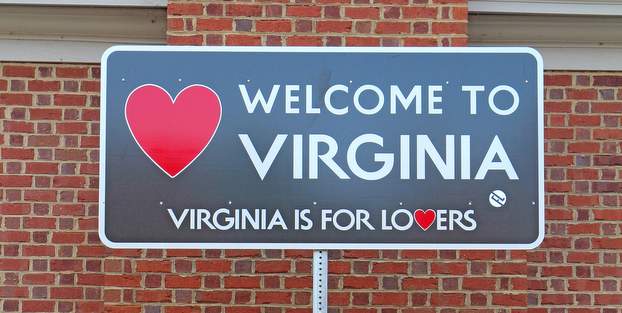California approves major overhaul of battery storage O&M standards

By Maureen Gorsen, Justin Savage and Sophia Wallach | Sidley Austin LLP
For the first time, battery energy storage systems (BESS) will be comprehensively regulated in the State of California. On March 13, the California Public Utilities Commission (CPUC) approved Resolution ESRB-13[1] (Resolution), which establishes comprehensive maintenance, operation, and incident reporting standards for energy storage systems — commonly referred to as BESS in California. This represents a significant regulatory shift, as the CPUC expands General Order (GO) 167 to include energy storage facilities for the first time.
The Resolution amends GO 167, which previously set forth operational and maintenance safety standards, enforcement mechanisms, audits, inspections, and incident investigation procedures for electric generating assets in California. The newly adopted version — GO 167-C — extends these standards to energy storage system (ESS) facilities and comprehensively updates the requirements for electric generating assets to reflect modern industry practices developed over the past two decades.[2]
The Resolution was subject to a 30-day public comment period but was issued through a formal rulemaking proceeding. According to the CPUC, all commenters supported adoption.[3]
Looking ahead, owners and operators of energy storage and electric generating facilities in California will need to intimately familiarize themselves with the new requirements and standards set forth by the CPUC under the Order.
Background & legislative mandate
Prior to GO 167-C, battery storage facilities in California operated under a fragmented set of local, state, and federal standards (e.g., state fire codes and California Energy Commission efficiency standards), but there was no comprehensive framework for safety, operation, maintenance, or incident reporting.
By contrast, electric “generating assets” — defined as “any device owned by an electrical corporation or located in the State of California used for the generation of electric energy” — were subject to comprehensive CPUC oversight under GO 167-B (adopted in 2005), which covered powerplants over 50 MW, including thermal, geothermal, wind, and certain solar or hydroelectric facilities, unless exempt.
Energy storage systems were not previously classified as “generating assets.”
As the market for renewable energy generation matured and the demand for energy storage grew, the absence of a comprehensive regulatory framework for energy storage facilities became increasingly apparent. Safety incidents at battery storage facilities in recent years underscored this need, including a high-profile battery fire in January 2025 in Moss Landing, California.
In response, the California legislature directed the CPUC to promulgate comprehensive maintenance, operation, and emergency response standards for the battery storage industry. Specifically, SB 1383[4] requires the CPUC to promulgate and enforce maintenance and operation standards, while SB 38[5] obligates every battery energy storage system facility to develop and maintain emergency response and reporting plans. The CPUC Resolution incorporated these requirements into the Order as GO 167-C.
Who does the order apply to?
The order applies to private owners (not government agencies) of large-scale (over 50 MW) energy storage and generation facilities in California, with specific exemptions for smaller facilities and certain types of public or specialized operations.
The order newly applies to all “energy storage systems,” defined as “commercially available technology that is capable of absorbing energy, storing it for a period of time, and thereafter dispatching the energy” with a metered output or as part of a group with aggregated outputs. This definition means the Order is battery-type agnostic.
Unless one of the following exemptions or exceptions to the requirements apply, all owners must comply with all sections of the order. Exemptions are determined by “summing the nameplate rating for all units” of the generating asset or ESS.[6]
- Facilities under 50 MW (i.e., small and medium-sized facilities),
- Federally licensed hydroelectric facilities (certain requirements only),
- Nuclear power facilities,
- Qualifying cogeneration facilities,
- Generation units located a customer site that serve only that customer’s load,
- Local publicly owned electric utilities,
- Public water or wastewater treatment facilities, and
- Facilities owned by local governments.
Facility owners can be “any person or entity owning, controlling, operating, maintaining, or managing” an ESS facility or a generating asset, including but not limited to an electrical corporation, but not a governmental agency (i.e., public utility).[7] Owners do not need to be located in California.
Generating Assets Energy Storage Systems Devices used for the generation of electric energy (e.g., thermal, geo-thermal, solar, wind) Commercially available technology capable of absorbing energy, storing, and dispatching energy Located in California Located in California > 50 MW Threshold > 50 MW Threshold Privately owned Privately owned Previously covered by GO 167-B Newly covered by GO 167-C
Key requirements for owners of energy storage and generating facilities
Maintenance, Operation, and Logbook Standards
Logbook Standards. Prepare facility-specific logbooks for each facility that “generates electric energy by the use of thermal, wind, solar, or other resources or stored energy owned by an electrical corporation or is located in California that is 50 MW or larger.” [8] Logbooks must be retained for at least five years and are subject to audit. This standard previously only applied to thermal energy facilities. Hydroelectric facilities have separate logbook standards.
Maintenance & Operation Standards. Prepare plans to comply with updated maintenance and operational standards, including training, recordkeeping, inspections, security, and ownership changes, among others, with further guidelines available through the CPUC’s Safety and Enforcement Division.
Initial Certifications. Submit initial certifications and accompanying verified statements showing compliance with required maintenance, operation, and logbook protocol plans within 180 days of the Order’s effective date for existing facilities, and 90 days after the effective date of title or transfer for new owners. Owners will need to periodically re-certify compliance.[9]
Emergency Response and Emergency Action Plans | Coordinate with local emergency response agencies and submit and maintain emergency action plans.[10]
Safety-Related Incident Reporting | Inform the state if there is a fire, serious injury, or major accident within 24 hours and send a written report within five business days. A triggering event also includes major property damage (over $200,000), an incident reported to workplace safety officials, or an incident that receives major news coverage.[11]
Corrective Action/Material Change | Notify CPUC of deficiencies and corresponding corrective action, or material changes within 30 days, including any significant changes to facility operation or maintenance.[12]
Facility Information Reporting Requirements
California Independent System Operator (CAISO).[13]Facility owners in California must comply with the Outage Coordination Protocol and provide outage reports to CAISO identifying any periods when the generating or storage facility is unavailable to produce or discharge electricity or is available only at a reduced capacity.[14]
North American Electric Reliability Corporation (NERC). Submit design, performance, and event data to NERC for inclusion in the Generating Availability Data System by the Order’s effective date (if applicable).[15]
Audit/Investigation/Inspection | Comply with CPUC audits, inspections, investigations,[16] and information requests.[17] All records must be retained for 5 years.[18]
Enforcement and compliance
Failure to comply with these standards may result in CPUC enforcement actions, including fines, penalties, and formal proceedings.[19] This increases the legal exposure for facility owners, particularly following a safety incident.
Key takeaways:
- Owners and operators of electric generating and energy storage facilities in California must follow revised CPUC safety and maintenance standards, and reporting requirements.
- Noncompliance with the above requirements opens owners of ESS facilities, along with generating assets, to potential CPUC enforcement.
- Owners must report a serious injury, major accident, or other triggering event within 24 hours of occurrence.
- Owners have 180 days from the Order’s effective date to certify compliance within the revised maintenance and operations plans, and logbook protocols.
- Compliance with the new requirements and standards will likely require investment in administrative and operational procedures and may affect insurance policies, particularly for newly covered storage facilities.
- Electric energy generation and storage continues to be a priority for California. Already this year, SB 540[20] which aims to improve grid reliability and reduce costs, passed out of committee unanimously (17-0).
In sum, owners and operators of electric generation and storage facilities must comply with a comprehensive framework of safety, maintenance, and emergency response standards under Go 167-C. Proactive compliance will be essential to avoid enforcement risk.
[1] Resolution ESRB-13, Cal. Pub. Utils. Comm’n (Mar. 13, 2025) (the “Resolution”).
[2] General Order No. 167-C, Enforcement of Maintenance and Operation Standards for Electric Generating Facilities and Energy Storage Systems, Cal. Pub. Utils. Comm’n (Sept. 2, 2005) (“GO 167-C”).
[3] Resolution, at 10.
[4] S.B. 1383 (2022), 2021-2022 Leg., Reg. Sess. (Cal. 2022).
[5] S.B. 38 (2023), 2023-2024 Leg., Reg. Sess. (Cal. 2023).
[6] GO 167-C § 3.0.
[7] “Electrical corporation” is defined in Pub. Util. Code § 218. “Government agency” is defined in Pub. Util. Code § 761.3(f)(1)-(3). See GO 167-C §§ 2.6, 2.9.
[8] GO 167-C at Appendix A § IV.
[9] GO 167-C § 14.1.1.
[10] GO 167-C at Appendix D § 20(e).
[11] GO 167-C § 9.4.
[12] Id. § 14.1.2.
[13] CAISO is the nonprofit public benefit corporation that operates California’s wholesale power grid. GO 167-C § 2.2.
[14] Id. §§ 8.0, 9.3.1.
[15] Id. §§ 9.3.2–3.
[16] Id. § 10.0.
[17] Id. § 9.0.
[18] Id. § 10.4.
[19] Id. §§ 11–13.
[20] S.B. 540, 2025-2026 Leg., Reg. Sess. (Cal. 2025) (pending).





Comments are closed here.